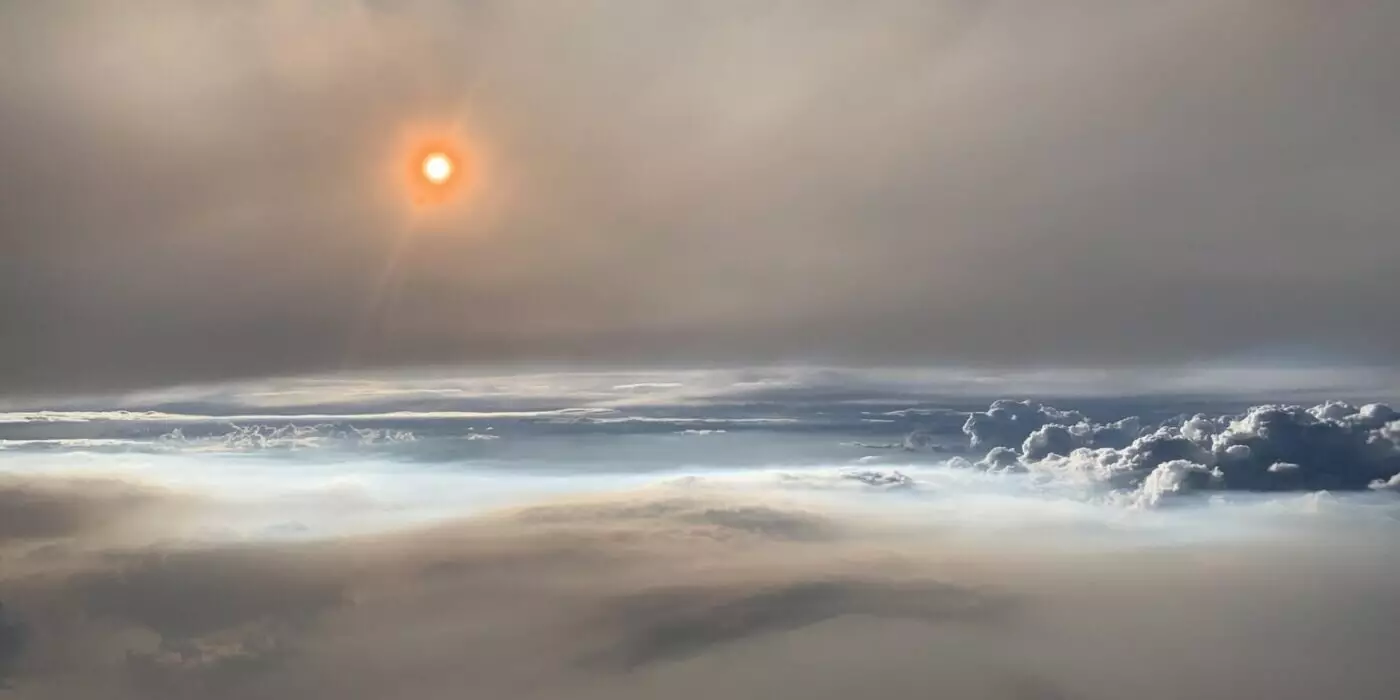As our planet continues to warm, the frequency and ferocity of large-scale wildfires are escalating at an alarming rate. These devastating phenomena not only ravage ecosystems but also inject immense quantities of black carbon into the atmosphere—a short-lived pollutant that plays a pivotal role in climate change. Black carbon, known for its ability to absorb sunlight, significantly contributes to atmospheric warming and has now become a focal point for scientists trying to unravel the intricacies of climate dynamics. However, the complete extent of its effects, particularly from extreme wildfire events that lead to the formation of pyrocumulonimbus (pyroCb) clouds, remains shrouded in uncertainty.
The Role of Pyrocumulonimbus Clouds
PyroCb clouds are extraordinary formations that arise from intense wildfires, lifting smoke and particulate matter high into the atmosphere—increasingly into the upper troposphere and lower stratosphere. This has profound implications, as the black carbon embedded in these clouds can persist for months, affecting stratospheric temperatures and overall atmospheric composition. Recent studies have illuminated aspects of this phenomenon, yet many questions linger. How exactly does the black carbon from pyroCb clouds differ in its radiative effect compared to that from typical wildfires or urban pollution sources?
Groundbreaking Research from Washington University
A groundbreaking study led by Rajan Chakrabarty and his team from Washington University in St. Louis attempts to provide some clarity on these pressing issues. Their research, recently published in *Nature Communications*, involved detailed airborne measurements of black carbon particles sourced from an active pyroCb thunderstorm in Washington state. This innovative approach was part of the 2019 NOAA/NASA FIREX-AQ field campaign, aimed at bridging gaps in our understanding of black carbon’s role in the upper atmosphere.
Chakrabarty’s team uniquely focused on the diversity of black carbon in terms of size and morphology at a particle level. These finer measurements are crucial, as they reveal that black carbon derived from pyroCb clouds exhibits significantly higher sunlight absorption—up to twice as much—compared to particles generated from smaller fires and urban emissions. Such findings underscore the urgent need for a refined understanding of black carbon’s unique impacts, especially as climate change intensifies.
The Unique Characteristics of Black Carbon
What’s particularly striking about the research findings is how they highlight the distinct optical properties of black carbon in pyroCb clouds versus typical wildfire-derived black carbon or urban pollutants. By employing a sophisticated single-particle optics model, the researchers were able to quantify the extent to which these particles absorb light, contributing to heightened heating of the upper atmosphere. This innovative approach not only enhances our understanding of black carbon’s behavior but also stresses the necessity of more precise measurements to inform climate models.
The implications of such research are far-reaching. Black carbon from pyroCb events in places such as Canada and Australia has been shown to migrate globally, persisting longer than previously anticipated and interfering with dynamic atmospheric circulation patterns. This exchange of pollutants can elevate warming not just locally, but also across significant expanses of the Northern and Southern Hemispheres.
The Critical Need for Continued Research
As we grapple with the escalating impacts of climate change, it becomes increasingly essential to focus on the role of black carbon in the stratosphere. Chakrabarty’s findings are a clarion call for the scientific community to intensify their efforts in measuring and understanding black carbon’s radiative effects thoroughly. Current climate models risk underestimating the implications of these particles without precise data.
Chakrabarty emphasizes that comprehensive measurements of pyroCb black carbon light absorption are vital for refining climate models and improving predictions regarding stratospheric warming. As the science of climate change continues to evolve, understanding the intricate mechanics of atmospheric warming agents like black carbon will be pivotal in formulating effective strategies to combat the climate crisis. Failing to understand these nuances could mean the difference between a manageable future and an uncontrollable climate catastrophe.

